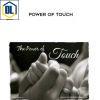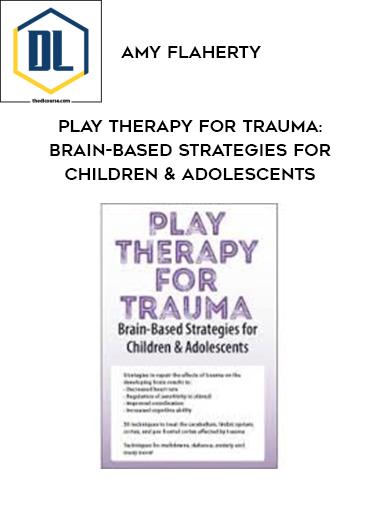-
×
 Cris Chico – Find Motivated Sellers Online
1 × $54.95
Cris Chico – Find Motivated Sellers Online
1 × $54.95 -
×
 Helena Nista – Masturbation Coaching
1 × $14.00
Helena Nista – Masturbation Coaching
1 × $14.00 -
×
 Lynne McTaggart – Developing Psychic Abilities
1 × $15.00
Lynne McTaggart – Developing Psychic Abilities
1 × $15.00 -
×
 Keith Cunningham – Plan or Get Slaughtered
3 × $25.00
Keith Cunningham – Plan or Get Slaughtered
3 × $25.00 -
×
 The Modern Man – The Flow Audiobook
1 × $37.00
The Modern Man – The Flow Audiobook
1 × $37.00 -
×
 The Friend She Falls In Love With (Master Package with Bonuses)
1 × $51.00
The Friend She Falls In Love With (Master Package with Bonuses)
1 × $51.00 -
×
 Derek Rake – Shogun Sequences Handbook Volume 2
1 × $19.00
Derek Rake – Shogun Sequences Handbook Volume 2
1 × $19.00 -
×
 John Overdurf – Splitting Synesthesias within the Rhizome
1 × $42.00
John Overdurf – Splitting Synesthesias within the Rhizome
1 × $42.00 -
×
 Arash Dibazar – Deja vu
1 × $7.00
Arash Dibazar – Deja vu
1 × $7.00 -
×
 Tantra Body De-armouring Tutorials
1 × $65.00
Tantra Body De-armouring Tutorials
1 × $65.00 -
×
 Laura Silva – Manifest Like A Millionaire
1 × $39.00
Laura Silva – Manifest Like A Millionaire
1 × $39.00 -
×
 Alek Sheffield – The Six-figure Storefront
1 × $9.00
Alek Sheffield – The Six-figure Storefront
1 × $9.00
Buy With Coupon: DLC25 (-25%)
Play Therapy for Trauma: Brain-Based Strategies for Children & Adolescents – Amy Flaherty
$109.00 Original price was: $109.00.$28.00Current price is: $28.00.
Product Delivery : Instant Deliver
Description
Play Therapy for Trauma: Brain-Based Strategies for Children & Adolescents – Amy Flaherty
Salepage: Play Therapy for Trauma: Brain-Based Strategies for Children & Adolescents – Amy Flaherty

Techniques to repair the brain and improve:
- Attachment and regulation through Theraplay and Brain Gym exercises
- Coping skills and emotional identification through play techniques
- Executive function for positive choices through sand tray, art therapy and CBT
Are you struggling to find creative, effective, brain-based techniques to help your kids who suffer from anxiety, impulsivity, isolation and defiance as a result of trauma?
Join Amy Flaherty, to discover innovative brain-based techniques, such as sandtray, art, and movement exercises to use in the play room to increase cognitive ability, regulate sensitivity to stimuli, and improve coordination. You will leave with confidence to design, tailor, and apply play therapy techniques using the backing of solid neuroscience.
Learn to recognize trauma loops, dysregulation, regression, rigidity in your clients, and discover countless and effective play therapy techniques to heal them. Take advantage of the latest brain-research to effectively treat common trauma-related behaviors, such as:
- Repetitive movement
- Isolation
- Meltdowns
- Defiance
- Harm to self and others
- and many more!
Videos, case studies, and experiential techniques will be used to fully explain play therapy techniques and the latest brain research.
- Describe the structure and function of the brain, with a focus on the developing brain.
- Explain the specific effects of trauma on the brain.
- List 5 behavioral symptoms that result from environmental or physical trauma.
- List 2 play therapy techniques to repair the limbic system for emotional Identification.
- Apply the principles of interpersonal neurobiology in the play room.
- Describe using rhythm play therapy techniques to relegate the cerebellum.
Overview of the Effect of Trauma on the Brain
- Age-appropriate play
- Environmental vs physical
- Long-lasting effects: ACES score
- Protective factors with trauma
- Importance of attachment research
- Five distinct symptoms of trauma within play therapy
Principles of Interpersonal Neurobiology in Play Therapy
- The Domains of Integration
- The divided brain and why it matters
- How play therapy is able to regulate and allow the person to move up and down the brain system as needed
- Case examples to demonstrate lack of integration
REPAIRING THE BRAIN THROUGH PLAY TECHNIQUES – OVER 30 TECHNIQUES
Techniques for dysregulation, rigidity, regression, trauma loops (targets cerebellum)
- Rhythm games and songs
- Attachment activities
- Touch in play – when appropriate, best practices
Techniques for emotional identification (targets the limbic system)
- Color my heart activity
- Name that feeling
- Angry balloon game
- Angry volcano experiment
- Butterflies in my tummy
- What’s different in the sand tray
Techniques for coping skills to address rigidity, trauma loops, and harmful behaviors (targets the cortex)
- Mad Libs assertiveness skill game
- I can calm down hand game
- Breathing games
- Calm down bottle/sensory bottle
- Positive self-talk
- Biblothearpy in the play room
Techniques to improve executive function for positive choices: After body is regulated and the whole brain is online (targets the pre-frontal cortex)
- Vision board
- Sandtray directives
- Draw headstone
- Carrying shame stones
- Board of directors
Best practices for parents/caregivers
- Name it to tame it
- ACT method
- What research says about the importance of parents working on their own stories
Delivery Policy
When will I receive my course?
You will receive a link to download your course immediately or within 1 to 21 days. It depends on the product you buy, so please read the short description of the product carefully before making a purchase.
How is my course delivered?
We share courses through Google Drive, so once your order is complete, you'll receive an invitation to view the course in your email.
To avoid any delay in delivery, please provide a Google mail and enter your email address correctly in the Checkout Page.
In case you submit a wrong email address, please contact us to resend the course to the correct email.
How do I check status of my order?
Please log in to TheDLCourse account then go to Order Page. You will find all your orders includes number, date, status and total price.
If the status is Processing: Your course is being uploaded. Please be patient and wait for us to complete your order. If your order has multiple courses and one of them has not been updated with the download link, the status of the order is also Processing.
If the status is Completed: Your course is ready for immediate download. Click "VIEW" to view details and download the course.
Where can I find my course?
Once your order is complete, a link to download the course will automatically be sent to your email.
You can also get the download link by logging into your TheDLCourse account then going to Downloads Page.
Related products
-92%
-69%
-60%
-65%
-86%
-41%
-60%









